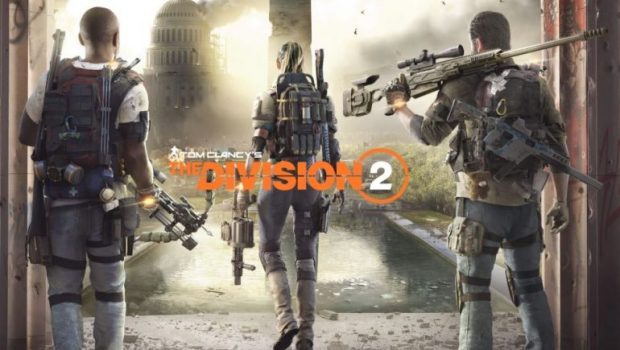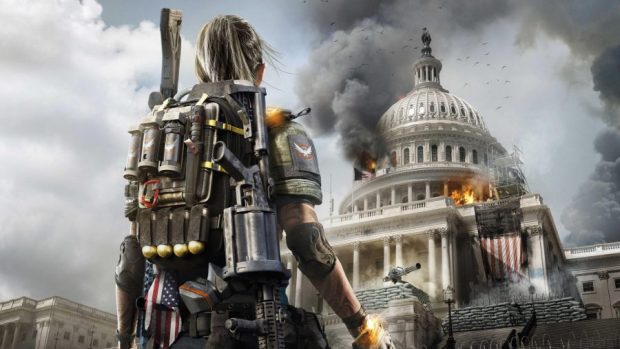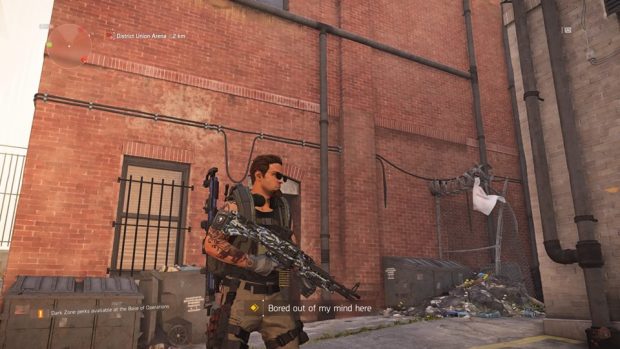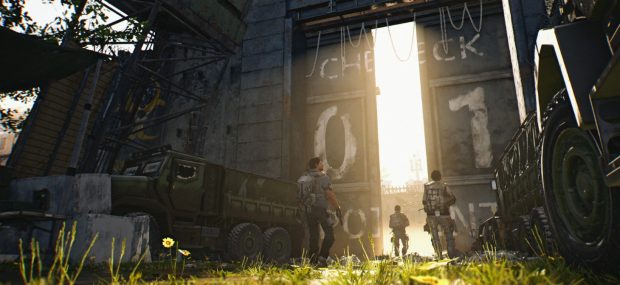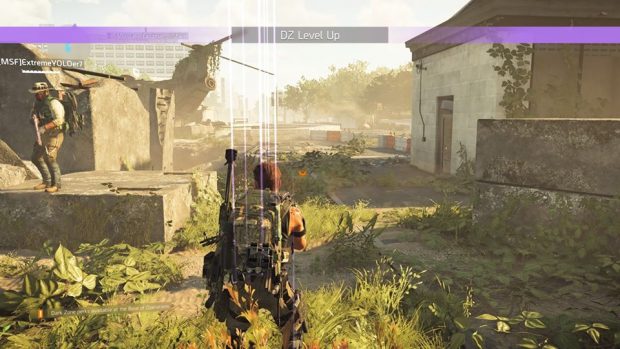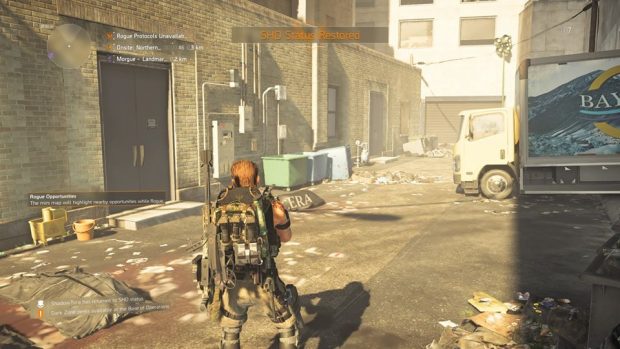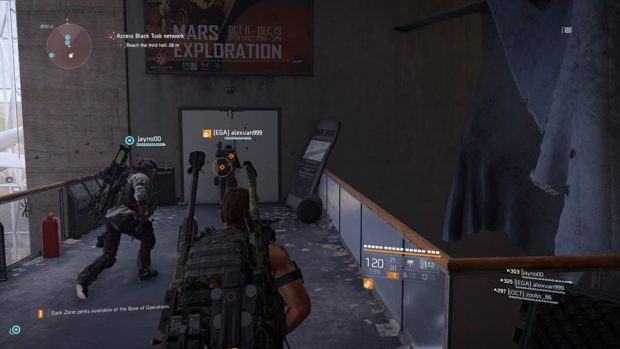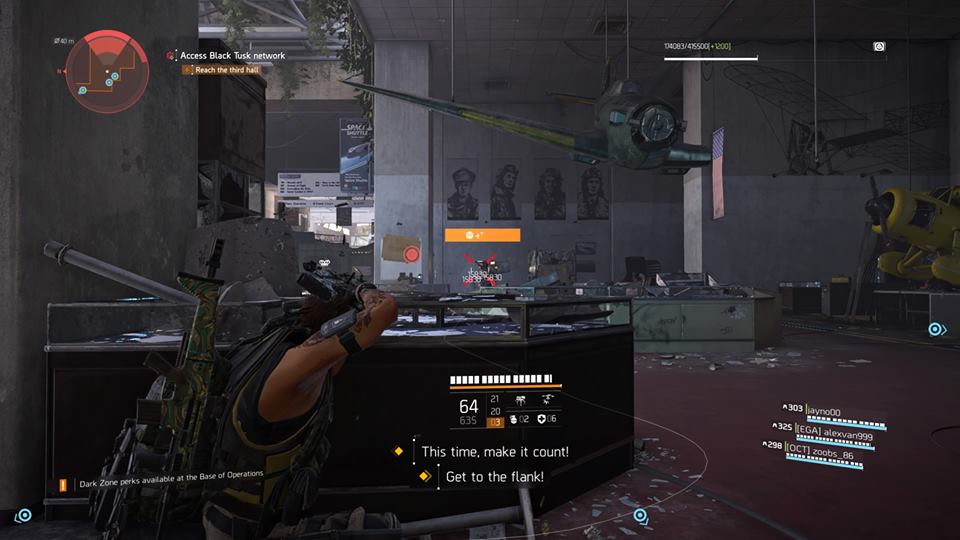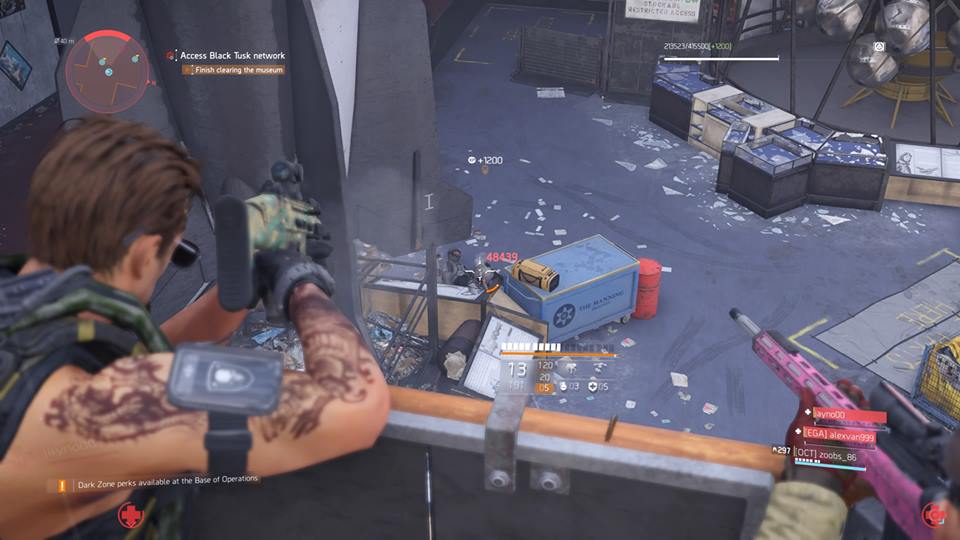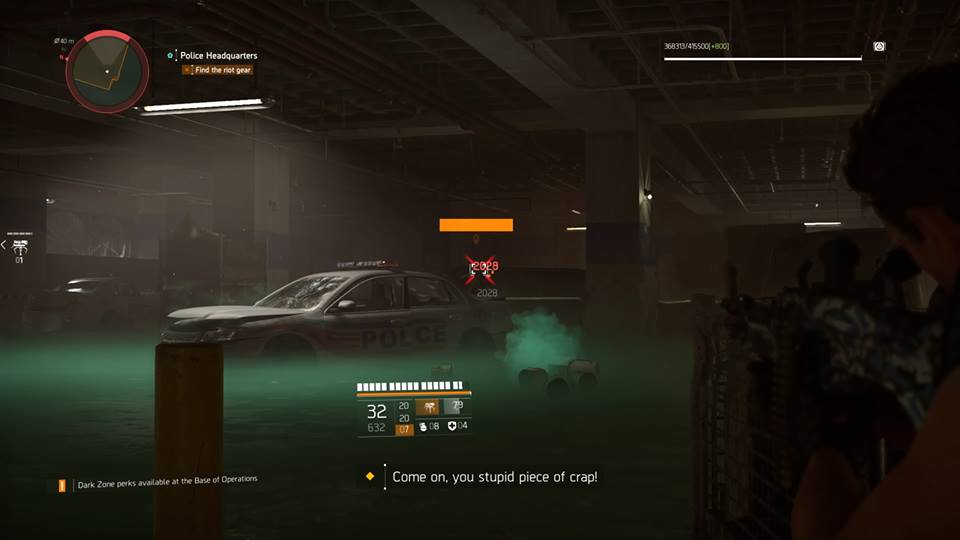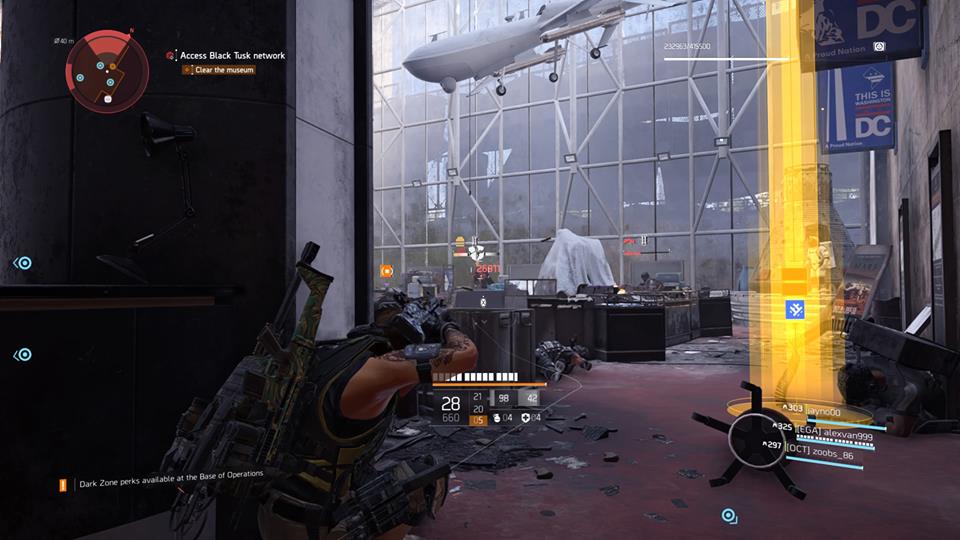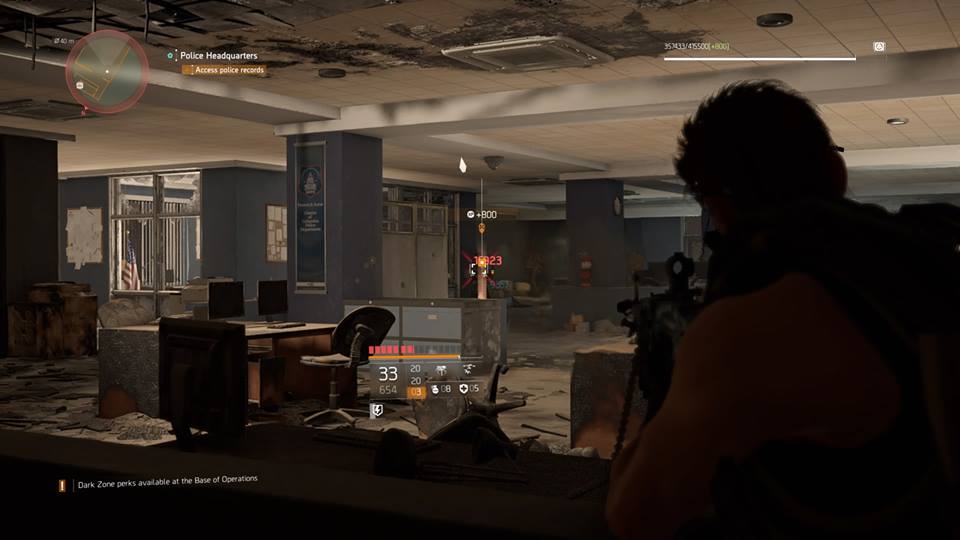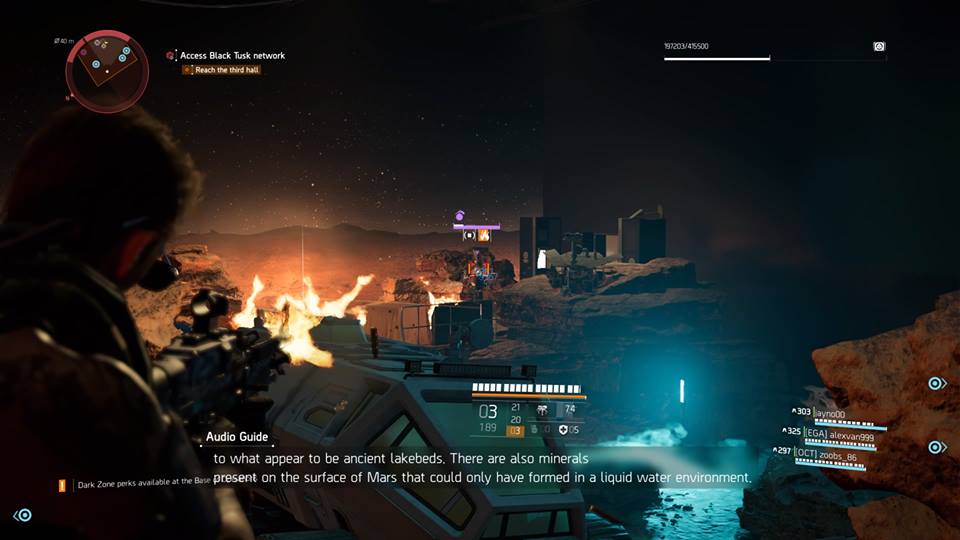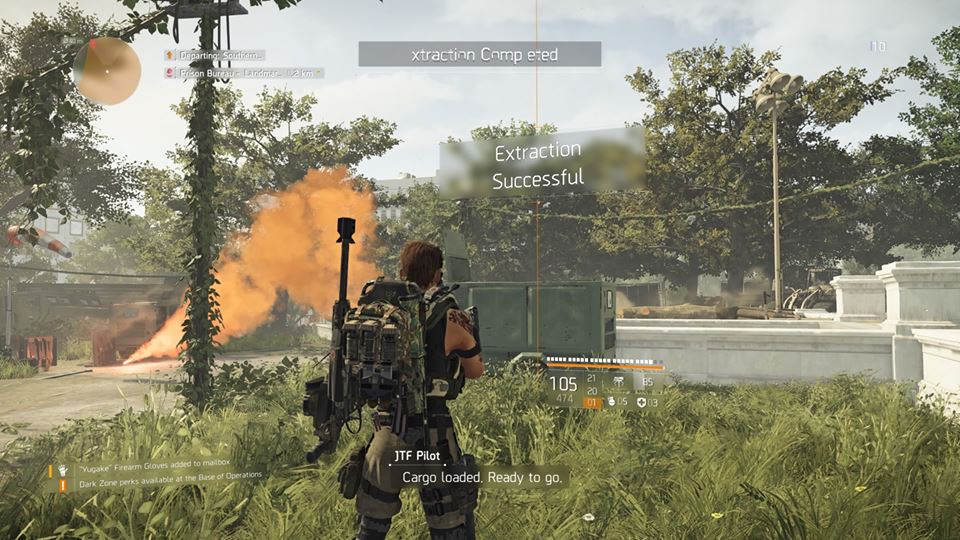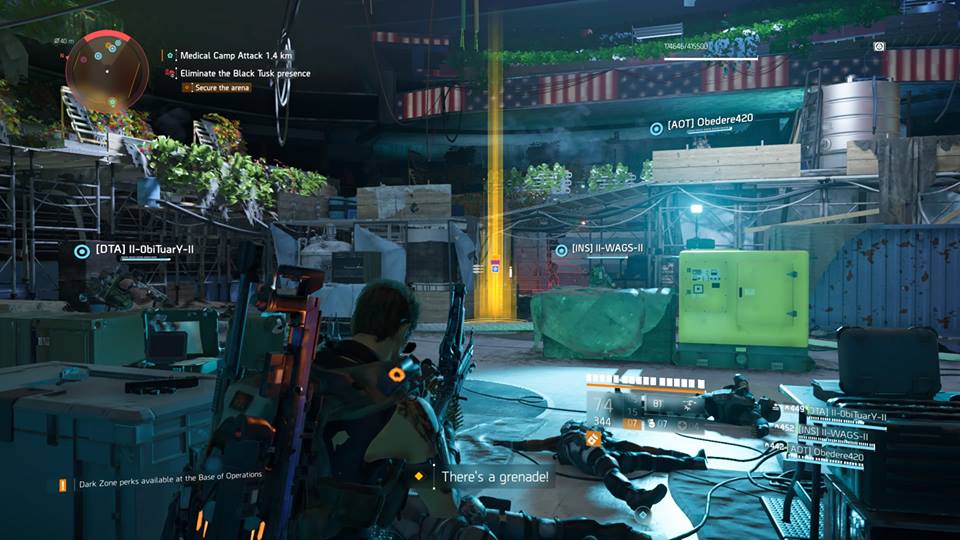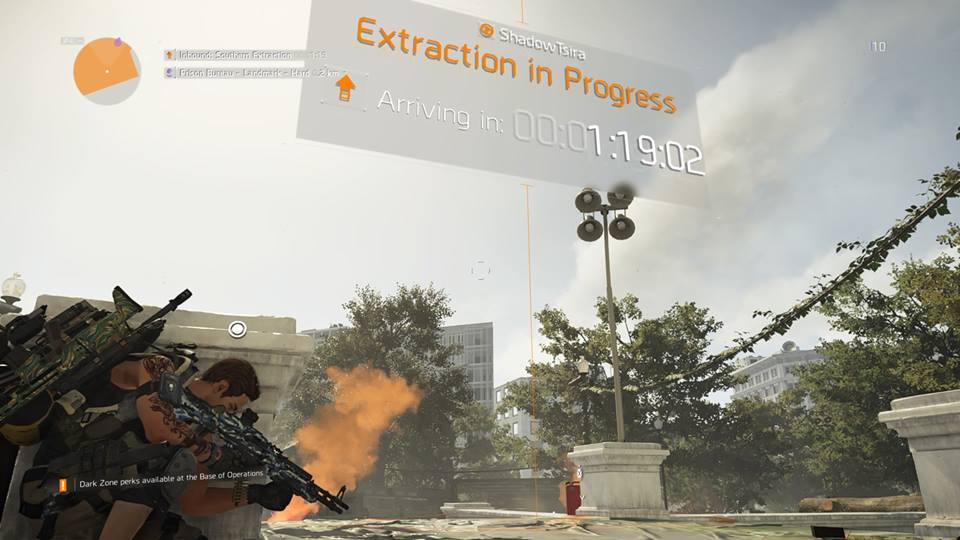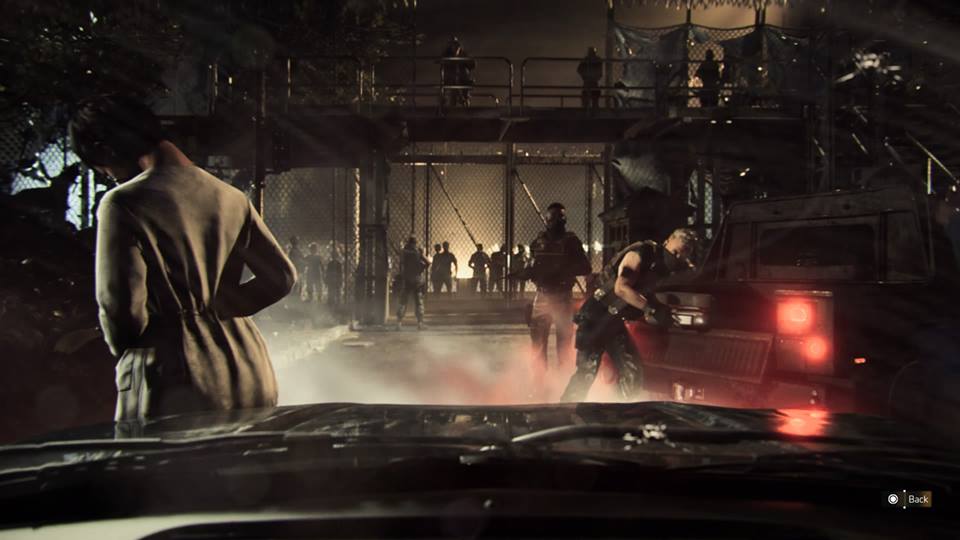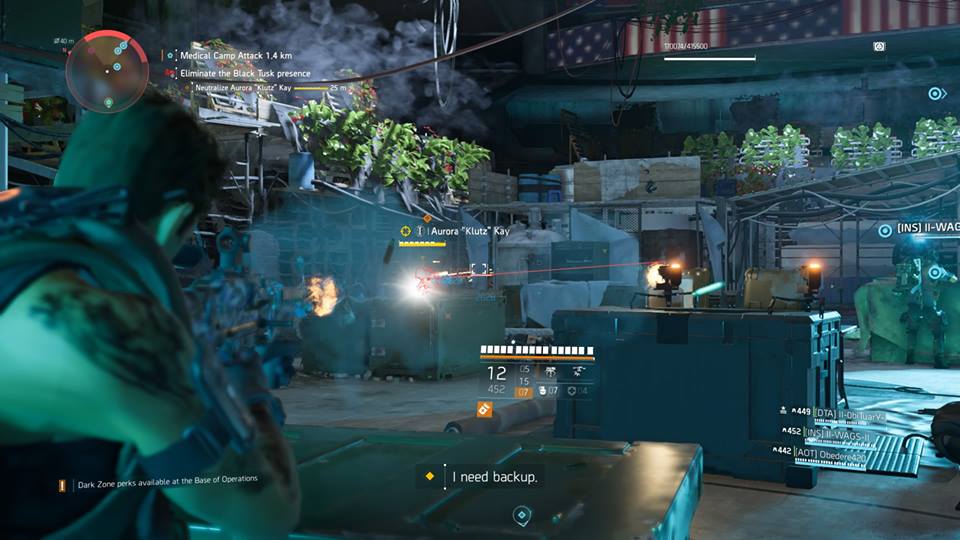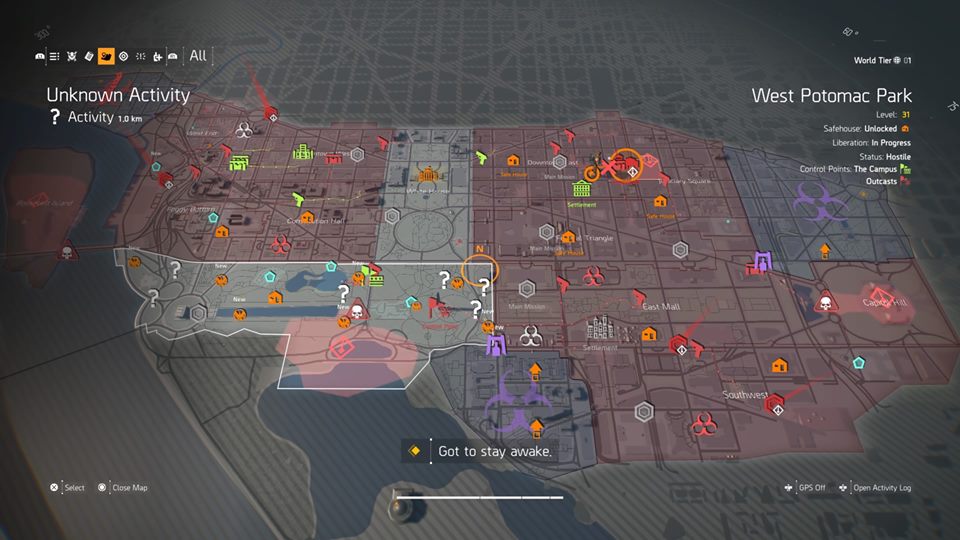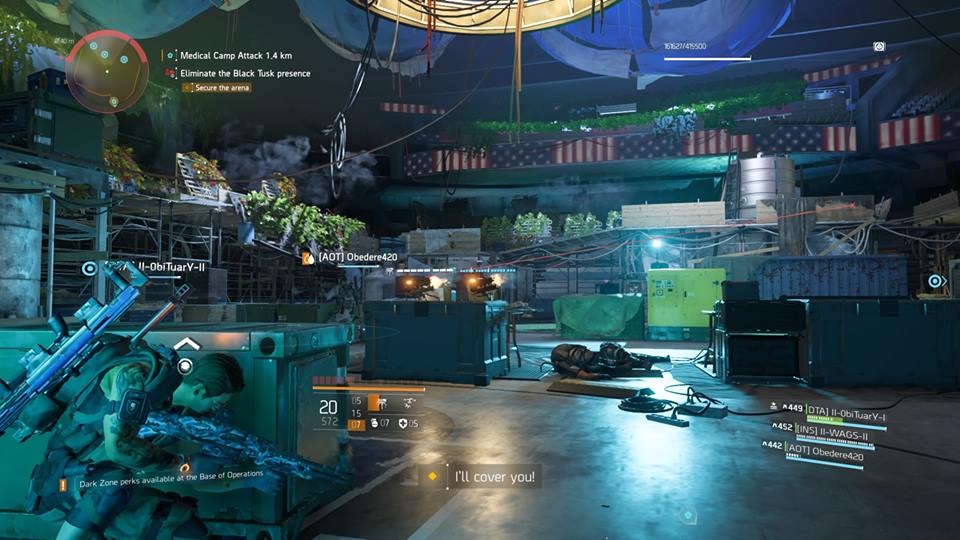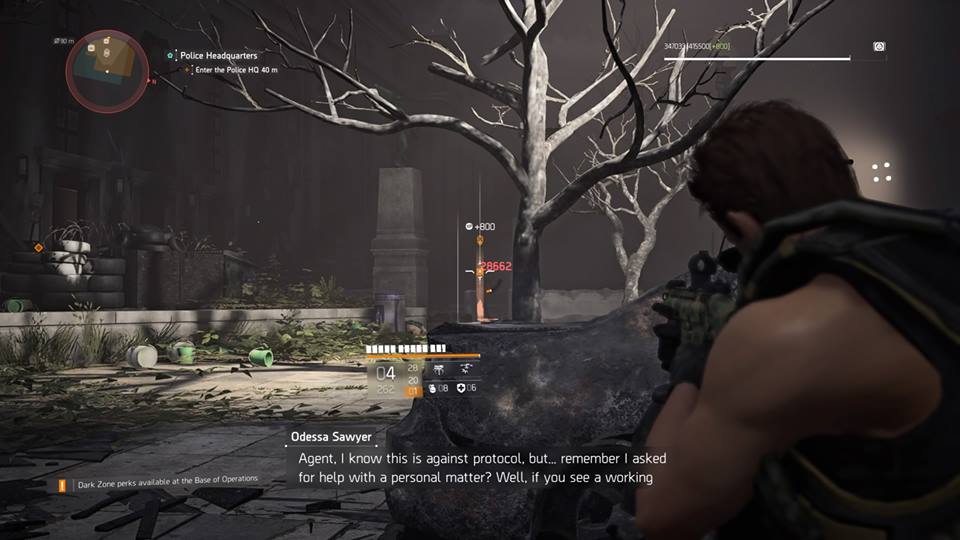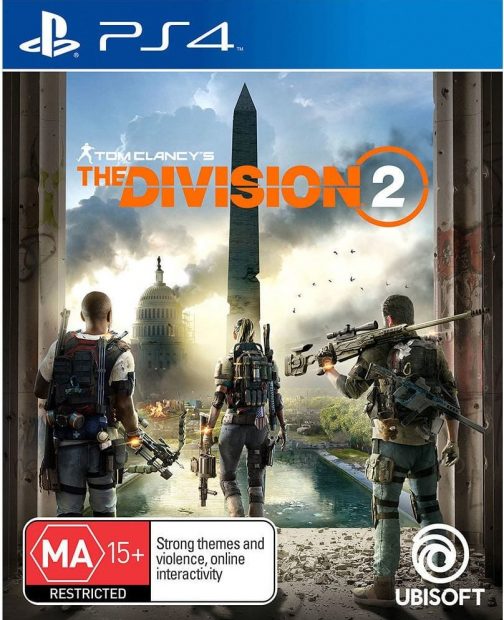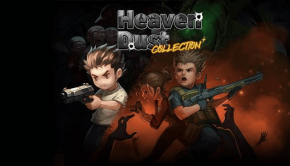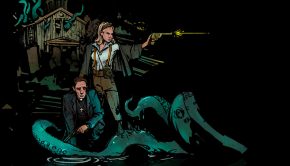Tom Clancy’s: Division 2 Review
Summary: Division 2 is a little rough around the edges, but has made great strides in becoming the complete experience.
4.2
Shoot 'em, Loot 'em
Tom Clancy’s: Division 2, a post-apocalyptic looter shooter, has you once again in the seat of a Division Agent. This time charged with, liberating Washington DC. I was there during the first Division, I thoroughly enjoyed the story played out to us. Most of my compatriots however, were less interested in story and more on endgame content. Division one, was a little fifty fifty, some people loved it, for others it wasn’t their thing. We can all agree however, that Division one lacked a decent roadmap, it wasn’t until very late in it’s service life did we get to see some memorable content. On the outside, with Division 2, it’s hard to tell the difference, outside of its graphical enhancements compared to its predecessor. Does Ubisoft get it right, in this second attempt at toppling certain unnamed competitors? Join me in finding out, you might just be surprised!
Division 1’s story then was of a smallpox epidemic, transmitted by banknotes, infecting many citizens of Manhattan. Division Agents were tasked to clean everything up and find out who was behind it. They did just that, saved the city but the culprit slipped away, a former Division Agent gone rogue.
Flash forward seven months after the incident, you, a Division Agent are aiding a civilian settlement outside of DC, when the Strategic Homeland Division (or SHD) network goes down. Receiving a distress signal from DC, your agent is instructed to check it out. Upon arrival to DC, your agent finds the Whitehouse under attack, after repelling the attack, you find out most of the country’s leadership, is either dead, or missing. The areas surrounding the Whitehouse, have been captured by three factions; Hyenas, a loosely organised group of gangs, thugs, criminals and anarchists looking to exploit DCs current state. Outcasts, a fanatical group of survivors from the Green Poison, from various quarantine zones around the city. Looking for personal revenge, on all they believe responsible, for their predicament. Lastly, the True Sons, a highly organised and ruthless, militaristic group consisting of, former Joint Task Force personnel, paramilitaries, traitors and mutineers, hell bent on taking control of the city.
Several settlements resist the harsh violence of these groups and attempt to maintain some of their humanity. You’re tasked with assisting these settlements, thwarting plans of rival groups, clearing the city of villainous hostiles, rescuing the president and finding a potential cure for Green Poison and many illnesses like it. After completing all the main scenarios and reaching maximum level, the game opens up and the endgame begins. A new faction of technologically advanced, private security contractors, Black Tusk takes over all main missions, strongholds and control points, you had captured up to that point, the president goes missing once more and you’re tasked with taking down the Black Tusk.
The game plays identically to its predecessor, so fans and newbies alike, should be able to pick it up very easily. It’s a third person, cover based, looter shooter. The core aspect of gameplay is engaging your targets, from the cover of densely packed bollards, waist high walls and abandoned cars. Moving around frequently, to gain the upper hand on your foes, as you progress through various missions, with various tasks, in order to weaken their hold on DC. Most of the combat in early game is straight forward, with little need to keep an eye on gear management, as most of it is pretty much the same. As you close in on the endgame, weapons and armor develop traits, these traits requires certain conditions to be met, once met they provide unique abilities, to aid your combat skills even further. Once in the endgame phase, the World Tiers are introduced, enemies become tougher, rewards greater, skills more unique, there’s always a new higher level to work towards too, until max tier, level five comes out with DLC Episode one.
After the game opens up to the Word Tiers, specialisation classes become available. The player can initially choose between three: Sharpshooter; a TAC .50 wielding sniper, that specialises in long range engagements. Demolitionist; focusing on disruption and elimination of entrenched positions and Survivor; specialising on traps and using debuffing status effects on the enemy. I can’t comment on them too much, as I only recently started using the Sharpshooter class and haven’t really noticed a huge change in my gameplay, because I mostly forget it’s even there, ammo is often too infrequent and is often lost when fast travelling or joining groups. I’ll need to make a more conscious attempt to wield them properly, to gain a better idea on its benefits, but on paper, these look pretty interesting. New to the game, are Control Points and random activities, Control Points are fortified positions on the map, initially held by enemies, these can be captured, by you, for local settlements, capturing these locations gives you access to lootable supply rooms, for gear, it also increases the allied presence in the local space, these allies can be a great help, against enemies in the area, while they don’t necessarily do loads of damage, they can distract the enemy, to give you better angles of engagement and ultimately help you win the fight.
The random activities in the world vary between a few different types: Territory control; usually a small section of the map hiding supplies and gear, take out enemies, get a cache key, open caches for gear, simple enough, there’s an elite version too with greater risk and reward. Hostage Rescue; attack a guarded position where enemies are holding civilians captive. Public Execution; essentially the same as hostage rescue, except that if you take too long getting there, the hostages will be killed. Lastly, Propaganda Broadcast; assault and take down an enemy held position blasting propaganda in the area. These are pretty neat little side things to do en route to main encounters, but they spawn frequently so these too can suffer from the repetitition bug.
The AI is no slouch in this game I tell you, both sides are smart with how they engage in combat. Allies focus of cover based fire and suppression, keeping themselves alive for a good amount of time, whilst giving you an advantage in combat, whilst enemies will furiously try to flank you. This can become incredibly frustrating however and it’s a little unrealistic, as some enemies, will take a hailstorm of bullets and still encircle you, even at the cost of their own life, knowing that it can and usually does, give other enemies, time to flank you and put you in a tough spot. While I do appreciate a challenge, this can and does, frequently become a hassle when playing solo. Once endgame opens up the map once more, factions will actively start seeking and capturing your control points, forcing you to either defend or recapture them later, loot is rewarded again for retaking any captured control point, allied NPCs too will also stage attacks to recapture any control points overtaken by rival factions, making roaming combat incredibly interesting and lively as there’s almost always, an engagement going down somewhere on the map. This too, however, can get a little repetitive as enemies frequently attack and capture points, forcing you to either ignore them and deal with increased enemy presence as you focus on missions, or return to the point to recapture it. Loot rewards are always going to be at, just below or above your current gear score, so at least there’s merit to retaking these all the time.
The Dark Zone makes a come back too and it’s been changed up a little bit. There are three Dark Zones on the map, two of these feature gear normalisation; to make play fairer, gear stats are evened out across all active players in these two DZs, meaning play is more of an even match, should you come up against a rogue agent. A new tier of rogue has been added; Disavowed Agent is essentially the tier below Manhunt, Disavowed essentially publicizes your name, so that people hunting rogue agents know who to look for, but you aren’t displayed on the map until reaching Manhunt status, rewards for downing an agent of this tier are less than a Manhunt, meaning that players who want to dabble in rogue status, can still play around with some risk, but still have a good chance of success. There are new ways to become rogue too, previously you had to kill fellow agents or steal their loot from extractions, now there are crates of contaminated gear, scattered across each zone, looting these grant you rogue statuses, the more you loot, the higher your eventual status climbs, the status ends in success if you can live long enough, for the rogue timer to expire. You can even hack SHD terminals to either remove or increase your cooldown timer, for safer or greater risk and reward. In the third DZ normalisation is off, so it’s every Agent for himself, this is likely to be where most of the PvP will take place, outside of the dedicated PvP modes, because all gear advantages are active, so the guys with the best gear are always going to be on the top and looking to pick off the weaker guys. Enter this DZ at your own risk!
I myself dabbled in a bit of rogue play by utilising these crates, I made thoroughly sure I was alone before attempting this, as it made for greater success rate of living to see my rogue status clear. It was quite fun, sprinting away at full speed and stalking the alleyways, to make sure I survived and I can definitely say, I’ll sneakily attempt it again in future. One DZ feature I was incredibly impressed with was that, not all gear found in the DZ was contaminated, both contaminated and non can be found in the DZ and only DZ loot has the potential to be lost on death, (this can be minimised with Dark Zone Perks), I found that the gear dropped from enemies, were less likely to be contaminated than gear found in chests, both types were also quite comparable, with gear on both sides, having the potential to be equal to the other, though DZ loot often comes out, slightly better as it should, it does have to be decontaminated after all, it would be a shame if generically dropped loot was better! This might change in higher World Tiers, which I’ll soon find out. You can now earn Dark Zone Perks too, ranging from better timers for rogue statuses to increased carrying capacity for contaminated loot, that is sure to get the Dark Zone boys frothing at the mouth.
Video is near top notch quality, recreating an almost perfect, post-apocalyptic rendition of Washington DC, rubbish strewn all over alleyways, cars destroyed and abandoned in the street, barricades and bollards a plenty to cover your approach, damaged monuments, occupied and fortified former government facilities, turned into bases of operations and strongholds, gritty, grimey and violent. Character creation is a little bit limited but definitely fleshed out, there’s plenty of glamour outfits to deck your character out, army and police uniforms, hiker gear, vintage clothes, biker gear and more, these can be worn as complete sets or with items from any set, to mix things up. These items can be earned after completing various tasks, leveling up and earning key fragments to make a cache key, or through the games’ microtransactions. There are a few visual bugs I noticed; some invisible walls, rendering issues as the game loads zones, some, likely lesser visited areas of the map seem to have parts missing, I found a few window ledges lacking a window sils, literally seeing through to sky on the other side, as though the ledge never existed. Most are minor, the most issues I have are some of the invisible walls that literally block access to some areas and force you to go around. No visuals were game breaking though, but there were some bugs I’ll get to a little later.
Audio did have some notable cracks however, the games’ soundtrack is good, not amazing but definitely not terrible. It pretty much carried on from the first Division as being successful but easily overlooked, it’s there and it works but it definitely won’t win any awards in my books. The biggest cracks however came from ambient sound and effects, along with some almost game breaking bugs early after release, of which I’ll get into soon. Sometimes sound would fail almost completely, gunfire went from loud and terrifying in its ability to wreak havoc and fear, to sounding like air rifles with their tiny pop, it became quite jarring at times, as if the game was struggling to load my chasing an enemy down and the sound of my gunfire at the same time. The soundtrack too, would fail at times, leaving me with an eerie silence, split only by the harrowing gunfire, that would echo into the streets, as two sides warred for control over the tiniest scraps of power. Dialogue was great however, voice lines were delivered with power, even if their somewhat emotionless avatars couldn’t quite match up. You really got the sense of desperation in some of these characters and even some of the dialogue between them is delivered with a kind of familiar banter. Where all other audio lost points, dialogue managed to snag a few back, I can only hope the team can work on the holes here and get them fixed pronto.
Final Thoughts?
Early Division 2 was plagued with gameplay bugs; skills disappearing moments after activation, terrible latency, complete game crashes, these will likely have had enough of a damaging effect that numerous players will likely have already dropped the game, that coupled with a few rather large patches that still left plenty of holes, made it difficult to enjoy early gameplay. Thankfully, most of these issues were dealt with pretty swiftly and play became a lot smoother, less buggy and no significant crashes since. Apart from some minor repetitive issues throughout the game including endgame content, of which I haven’t managed to explore it all. It seems that Ubisoft has learned a number of important lessens from the first game, I can’t say enough how pleased I am that ALL year one content is free for all players, this is the kind of stuff more developers should be implementing for the longevity of their games. This is the sort of stuff that keeps players happy and most importantly in game, this promise alone, coupled with the immediate replay value of Black Tusk makes the game so worth it’s minimum standard price of $79, Gold Edition is a little on the pricier side, as I generally don’t like paying more than $100 bucks for any game, but I’d still say it’s worth it. I can’t wait for the new content in episode one and the upcoming raid, this is an exciting concept and I’m eager to see how it goes.
*Gameplay footage used is from my own playthrough*
Game Details
Game Genre – Action/RPG, Third Person “Looter” Shooter
Label – Ubisoft, Massve Entertainment
Rating – MA15+
Year of Release – 2019
Engine– Snowdrop
Platforms – PS4, Xbox One, PC
Mode(s) of Play – Single, Online Co-op, PvP

